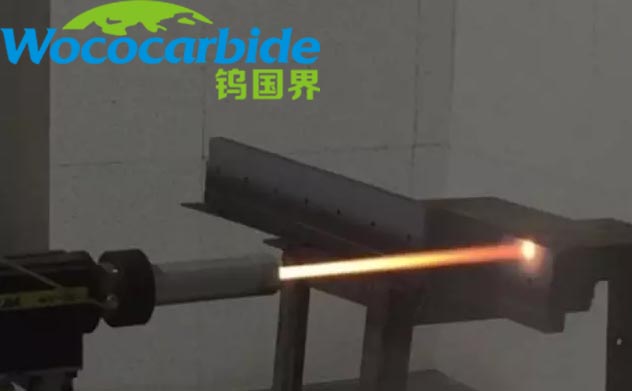

current position:Information and data>What is the principle of flame spraying technology?
1 Characteristics of flame spraying technology

Compared with other thermal spraying technologies, HVOF technology has the characteristics of higher sprayed particle velocity and lower spraying temperature. These two properties not only ensure high bond strength of the abrasion resistant coating prepared from HVOF, but also ensure less heat input to the substrate, thus preventing the interface between the coating and the substrate from oxidation and Substrate deformation. . The formation principle of supersonic flame flow is: due to the heating and evaporation of heat in the combustion zone and the droplet group, the vaporized aviation kerosene is fully mixed with the combustion-supporting gas, and then ignited and burned, releasing a large amount of heat and causing the temperature of the combustion product to rise sharply. High and violent expansion, forming a high temperature and high pressure air mass. The air mass is accelerated through the Laval nozzle to create a shock wave that continuously provides heat and kinetic energy to the sprayed powder.
The main technical characteristics of supersonic flame spraying are as follows:
1) Less heat input. Compared with thermal spraying techniques such as plasma spraying and arc spraying, HVOF has a lower flame temperature (adjustable from 600K-2200K). The lower flame temperature ensures that the coating is not oxidized during spraying and prevents the growth of nanoparticles. At the same time, the lower flame temperature prevents deformation of the substrate.
2) Higher particle velocity. After the sprayed particles pass through the barrel, they typically accelerate to a speed of a Mach 3-5 cone. The high-velocity particles reach the substrate, collide with the substrate and deform to form a dense coating. In general, the higher the particle velocity, the better the flattening of the particles and the higher the bond strength. The flight speed of HVOF thermal spray technology particles is significantly better than other thermal spray technologies. In HVOF technology, the supersonic flame flow accelerates the particles, while other thermal spray technologies use compressed gas to bring the particles to the surface of the substrate.
3) Higher deposition efficiency. Compared with coating preparation techniques such as brushing, PVD, CVD, and sputtering, HVOF technology can produce coatings of required thickness in a shorter time, while the other spraying techniques mentioned above usually take hours to complete. fully.
4) The spraying limit is small. HVOF technology can not only spray large workpieces outdoors, but also small workpieces, and the spray thickness is controllable.
5) The current shortcomings of this technology are mainly concentrated in: it is difficult to spray complex parts; the spraying environment is harsh and the spraying cost is too high.
2. The bonding mechanism of aluminum-based wear-resistant coatings
The process of forming a wear-resistant coating usually includes the following processes: the heating and melting process of the jet particles, the acceleration process of the droplets in the barrel, the flight process of the droplets in the barrel, and the process of the droplets reaching the surface. the surface of the substrate and interact with the substrate. The material collides and deforms and deposits on the substrate.
Different spray parameters and processes determine the combination of coatings. The combination of coating and substrate mainly includes metallurgical bonding, mechanical bonding, diffusion bonding and physical bonding.
1) Metallurgical bonding: Metallurgical bonding is the bonding of chemical bonding, usually in two ways. One is to form a transition layer compound between the coating and the substrate to achieve bonding. The other is to form a solid solution in the transition layer to form bonds. Metallurgical bonding has the highest bond strength compared to other bonding methods.
2) Mechanical bonding: also known as mechanical riveting. After the roughening treatment, the molten particles scattered at high speed fly to the surface of the substrate and collide with the substrate. The molten particles are flattened by the impact and spread over the surface of the substrate. The molten particles contract and bite bumps on the surface of the substrate during the subsequent condensation process, forming a mechanical bond.
3) Diffusion bonding: After the molten particles collide violently with the substrate, a large amount of kinetic energy is converted into heat energy, and the temperature of the local contact point reaches above the melting point of the substrate, resulting in local melting. Elements in the particles and elements of the substrate diffuse with each other at the micro-melting point, thereby forming diffusion bonds.
4) Physical combination: When high-speed particles are in contact with the extremely clean surface of the substrate, the high speed of the particles makes it possible to fly in the range of the atomic lattice constant (<0.5nm), i.e. the particles fully wet the substrate and the particles are in van der Waals In the force state, a physical bond is formed under the action of the force.
Hot information

